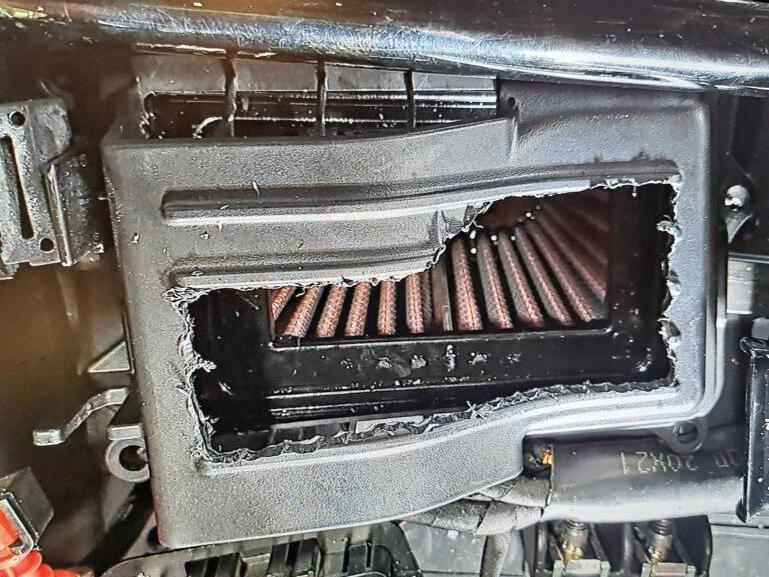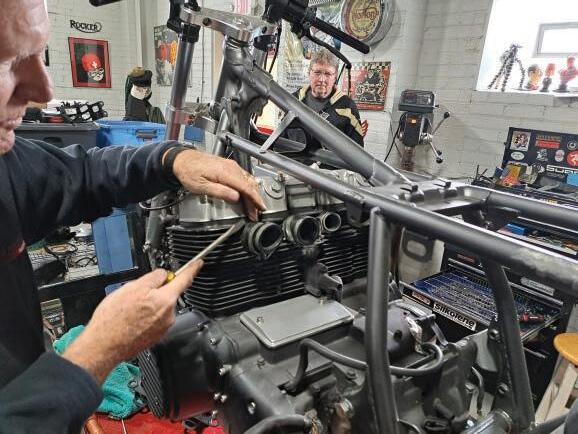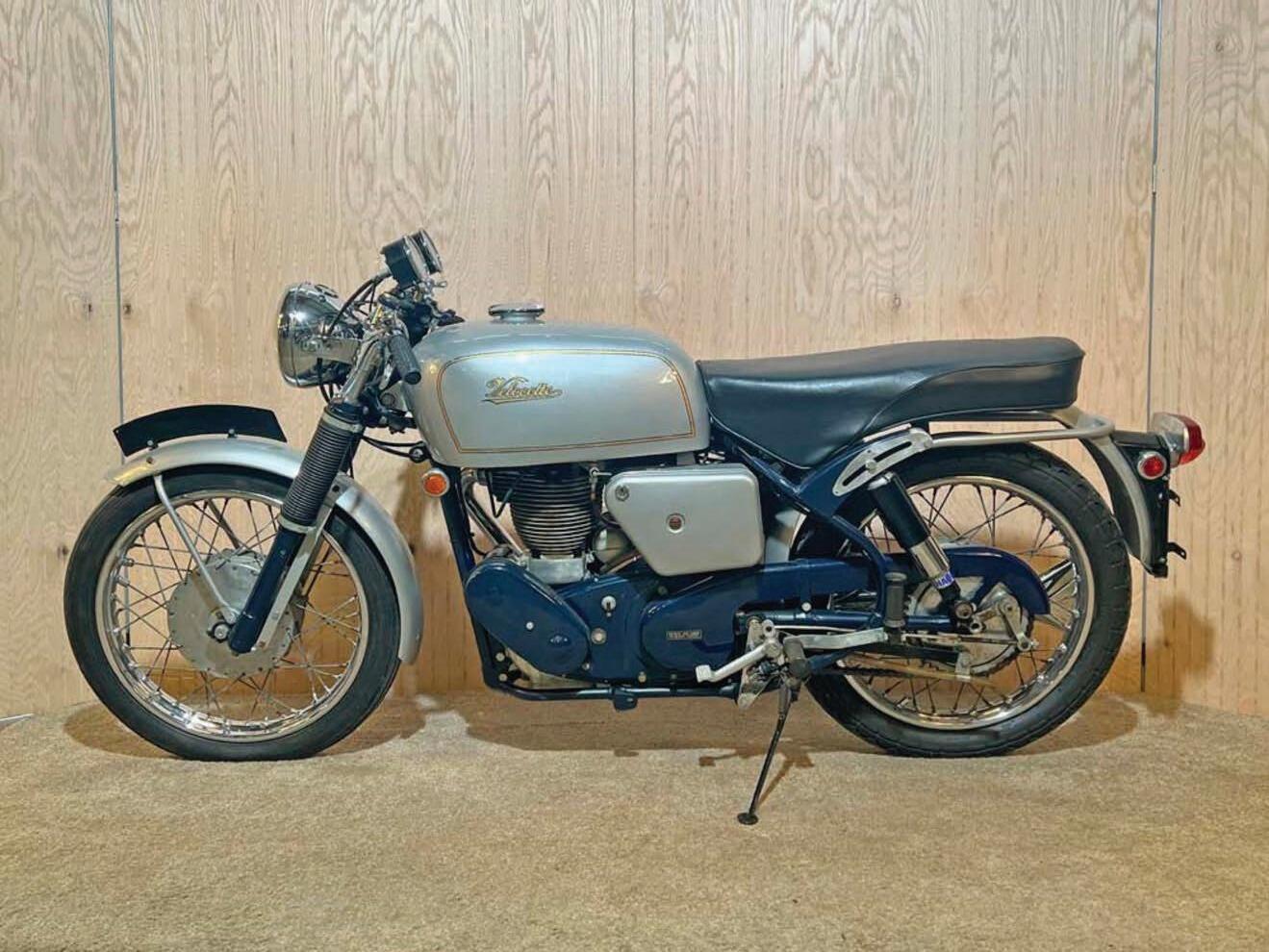
3 minute read
Queen
as Vegas residents Mike and Megan Hill, like many motorsports couples, share a deep affection for two wheels. After dating Megan in college, Mike decided to invest in a motorcycle and things have never quite been the same, Megan said. “Mike had a truck that got broken into and that prompted him to get a motorcycle; he wanted something he could put inside a house or garage after the theft. Eventually I became a rider, not just a passenger.”
That first two-wheeler was a serious performance bike in the form of a stretched 1993 Suzuki GSXR750 with an 1100cc engine shoehorned in it. Mike has been riding for two decades and taught Megan what he knew about biking back in 2015. She picked up additional tutoring by reading her partner’s bound collection of Rider Skills articles from “Sport Rider” magazine. Feeling confident and desiring her own slice of serious speed, her first purchase was a 2001 Honda RC51, of all things.
Advertisement
Predictably, those super-powerful wheels led to the frequent appearance of flashing lights in their rear-view mirrors, Megan said. “Mike was getting too many tickets racing on the street. His first time on a drag strip was on a 2006 Honda CBR1000RR.” Megan’s first foray into quarter mile competition had been in a car, but she soon felt comfortable enough on the V-twin Honda that she soon had it lined up at the Christmas tree lights.
The transition from street to strip was a logical one, Mike says.
“If you own a high-powered vehicle, it’s a waste if you can’t exploit it fully. Drag racing allows you to exploit a car or bike safely. Las Vegas is not a friendly motorcycle commuting city – there’s a lot of bike accidents – so we try to keep our motorcycling on the track, and encourage all of our peers to join us. But by going faster, we get faster bikes, so eventually both of us landed with fast Suzukis,” he said.
In addition to competing in motorcycle drags, Megan has ventured into roadracing in recent years, enrolling in the “Taste of the Track” roadracing school at Las Vegas Motor Speedway. She learned the intricacies of cornering aboard a Suzuki Hayabusa, which she described as “kinda heavy for the endeavor.” What the big four-cylinder ‘Busa is perfect for is reducing Megan’s elapsed times at the drag strip. Since purchasing the bike, she’s radically modified it with a turbocharger that’s propelled rider and bike to a top speed of 230 MPH in the quarter mile, crossing the finish line in just 6.3 seconds. The turbocharger has upped the Hayabusa’s already impressive power output from around 180 at the rear wheel to a crank-stressing 750 ponies.
Both Megan and Mike are involved with prepping their Suzukis for racing, a process that includes making radical changes to the bike’s running gear, fueling and chassis. “First, we added an extended swingarm, which we’ve been building since 2014,” Mike explained. “Second, we [work with] various sprockets for gearing. Third, is some sort of fuel management, whether it’s a stand-alone ECU or piggyback tuning system to help exploit the engine’s abilities.”


The most difficult part of the family sport is, naturally, engine dynamics, a complex, technical science with plenty of room for error. “Engine tuning; that’s the most difficult aspect of any form of racing,” Megan said. “There’s a constant push and pull of more horsepower versus engine reliability.”
With both riders racing the turbo Suzuki, Megan says the complex realm of dragbike tuning is further complicated by the differences in rider weight. “There’s two stages for this bike: the first stage is with piggyback fuel management [a Dynojet Power Commander]; the second stage is a full stand-alone with an aftermarket Maxx ECU. In the first stage, Mike at 270lbs, will race using no boost control. In the second stage, where boost numbers go up, we’ll use the Power Commander to have full management of the built engine and boost/power levels. In the first stage with piggyback fuel management, the bike should get into the mid 8 second elapsed times; after tweaking the suspension and clutch tuning, we will transition to the stand-alone fuel management which will allow the bike to get into mid-7’s.”
For her efforts, Megan has roared down the 1320 foot strip in a blistering 8.9 seconds aboard a turbocharged 1st generation Hayabusa running 6lbs of boost, making 250hp to the bike’s rear wheel. She currently has a stock Suzuki GSX-R1000 and is getting down the asphalt in nearly the same time just two years later. “She has taken over as the jockey of the family so her numbers are currently best, doing a 9 second pass with bad track prep and a bad start,” Mike says. “The bike is capable of a mid-8 second pass at least.”

The high-octane pair say drag racing can be an exhausting sport that’s potentially draining of both time and money. A steadfast DIY approach and earning cash through taking checkered flags is definitely the way forward. “If you can monetize the hobby you put yourself in the position to be paid for what you play with. Everything that’s modified on these bikes is done ourselves, from TIG welding to paint. We’re currently learning how to do our own tuning from a few full time professional racers,” she said. CR










